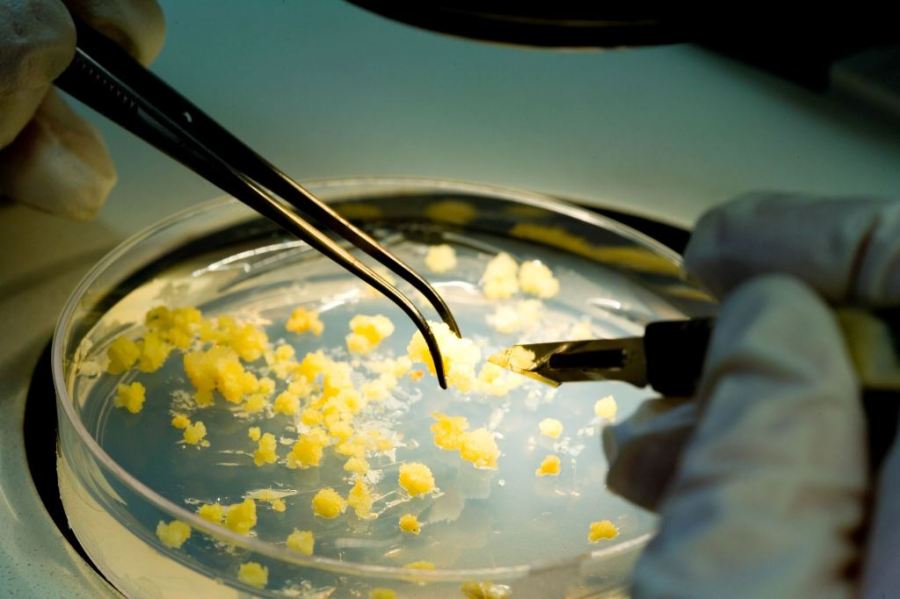Much of the actual outcome of the CJEU ruling on gene-edited crops will depend on how it’s transposed into UK law. CPM investigates.
We may not know how GE crop trials will be treated until a case is brought to a British court.
Tom Allen-Stevens
Since gene-edited (GE) material contains no trace of foreign DNA, scientists are baffled as to how the EU plans to enforce a wider scope of the GMO regulations.
The key difference between mutagenesis and transgenesis is that only the latter can be detected by DNA testing. This is believed to have underpinned GMO regulations because any foodstuff or farm produce entering the EU can be tested to verify it is correctly labelled.

Prof Ian Crute
Former chief scientist of AHDB Prof Ian Crute points out it won’t be possible to determine if a new variety has resulted from new gene-editing techniques or from ‘conventional’ mutagenesis, exempt from the GMO Directive. “Most informed scientists agree that the only sensible way forward is to regulate the novelty of the trait and not the means by which it has been produced,” he says.
Chief scientist at the NFU, Helen Ferrier agrees that decisions should be based on the evidence and not on political drivers. “UK farmers need access to all the tools available and NBTs are just one set of tools. Defra has always been positive about NBTs and GE so far. We need enabling, fit-for-purpose legislation with robust and proportionate requirements for assessing health and environmental safety.”
A further problem will come when ensuring GE varieties in the EU remain separate from non-GE lines, especially as most countries in the world have indicated they will treat the varieties as non-GM.
Genetic mutations occur out in the field naturally all the time, explains BSPB chairman Richard Summers. “In polyploid species like wheat, base pair deletions, translocations and chromosome segment re-arrangements are quite common. These natural processes can result in useful traits genetically indistinguishable from those engineered by GE mutagenesis. It’s part of a breeder’s job to spot natural variation in plots and develop improved varieties from it.
Breeders’ rights
“Within Europe, new varieties are protected by plant variety rights (PVR). PVR includes the specific provision for the variety to be available to any other breeder for crossing and forward breeding. This means that although a distinct variety is the property of the breeder who selected it, useful gene combinations and advantageous natural mutations that exist in that variety can be used by any breeder for further crop improvement. It appears the CJEU really hasn’t considered the practicalities of the use of naturally occurring variation that is indistinguishable from GE mutations, let alone breeders’ rights allowing the open access to registered germplasm for new breeding.”

The CJEU really hasn’t considered the practicalities, says Richard Summers.
Regardless of whether GE plant material can actually be detected, the CJEU ruling does bring new mutagenesis techniques fully within the GMO Directive, according to Julie Robinson of Roythornes solicitors. “The CJEU has stepped into the shoes of EU legislators and rewritten the GMO Directive to redefine the mutagenesis exemption, limiting it to those techniques which were well established as at the date of the directive,” she says.
On the face of it, that discounts the possibility that Defra could choose to regulate traits on a case-by-case basis, as suggested by scientists, as that would contravene the new ruling. “Interestingly, though, UK regulations currently consider most forms of mutagenesis as exempted from the GMO Directive. So the real questions for the UK Government are whether it will amend UK regulations now, as an EU member state, to bring them in line with the new ruling, and then how it will legislate post Brexit.”
A crucial question within this is how newer processes of mutagenesis will be treated, which affects some of the most promising material currently in development. “Most GE generally requires transgenesis through the CRISPR construct, although the foreign DNA doesn’t end up in the mutated organism,” explains Cristobal Uauy.
This brings it within the GMO regulations because the processes are only exempt if no GMO is involved. “New methods now exist which don’t need the transgenic step. We can apply a fix, such as an improvement in disease tolerance, to a wheat variety on the current AHDB Recommended List, for example. The resulting, improved variety will be totally GM-free and ready to use within 12 months.”
Although technically exempt under the GMO Directive, the new ruling now deems GE material generated under this technique and any future GE method a GMO, which must be regulated according to the directive, notes Julie. “Post Brexit the UK can, however, decide to legislate differently, and we may not know how GE crop trials will be treated until a case is brought to a British court.”




